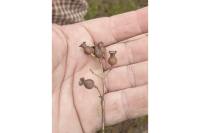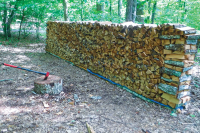Forest loss could harm water quality, study finds

A new study from researchers focusing on the forest-water connection in the Southern U.S. found that, over the coming decades, many forested watersheds could be lost to development, lowering water quality and raising water treatment costs.
“To our knowledge, this is the first study to combine water quality data, land cover projections and information about public water systems at a large scale,” said Peter Caldwell, a U.S. Forest Service researcher and lead author of the new study.
The team examined small watersheds across a broad region, ranging from Virginia to Texas and covering a variety of forest types, soils, topography and hydroclimates. The results confirm that forests are important for water quality. Water running off forested lands generally has lower concentrations of nitrogen, phosphorus and suspended sediment than water leaving any other type of land, the study found.
There are nuances within that generalization. Some individual forested watersheds can have lower water quality, perhaps because of the type of soil or rock present or due to sediment erosion in the stream channel.
Nevertheless, losing forests to any other land use would likely result in lower water quality, the study suggests. For example, developing just 1% of forests upstream of an intake could result in an 0.4% increase in the concentration of suspended sediment in the water, on average. Municipalities that draw water directly from rivers are at higher risk of lower water quality.
More than 80% of southern forests are privately owned, and the human population is growing — more southern forests have been lost to development than anywhere else in the U.S. The research team includes economists who will link water quality and water treatment costs, a line of research that could one day inform programs and compensate private forest landowners for the ecosystem services their forested watersheds provide.
The new study is related to a large body of research exploring how people depend on forested watersheds for their drinking water. The research was published in the scientific journal Science of the Total Environment.









